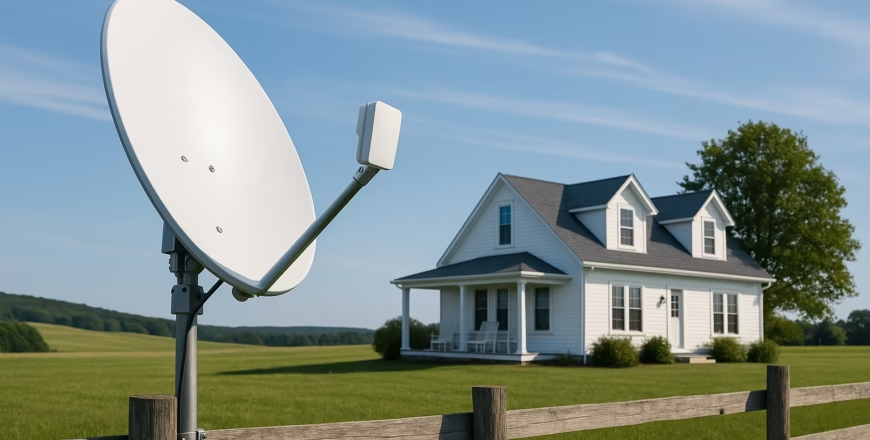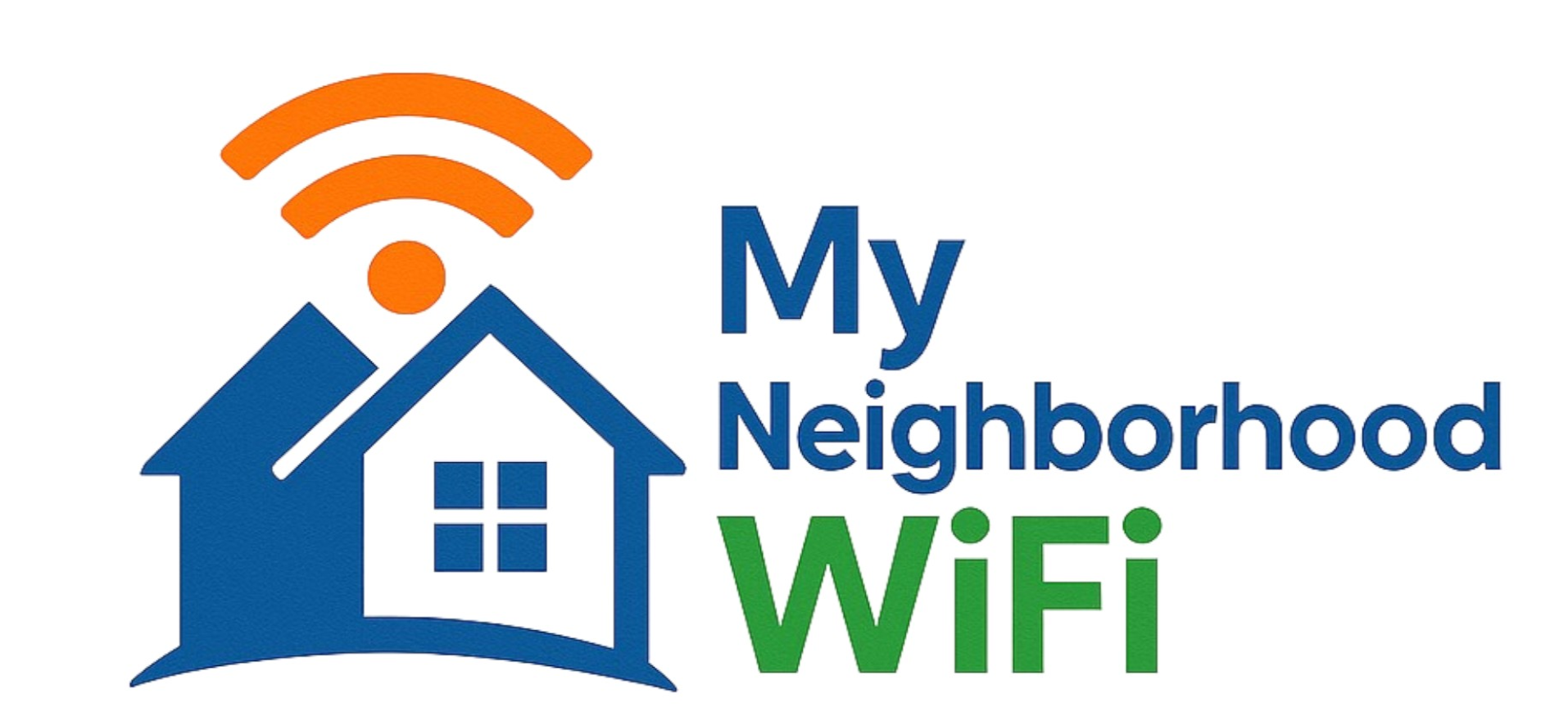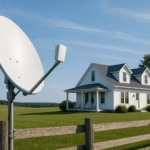
Best Rural Internet Options in the US for Fast and Reliable Connectivity
Living in a rural area used to mean having to sacrifice internet speed and reliability. But times have changed. The demand for high-speed connectivity has exploded, and as a result, more rural internet options are now available than ever before. Whether you work from home, stream entertainment, or run a small business, having fast and reliable internet is no longer optional—it’s essential. In this guide from MyNeighborhoodWiFi.com, we’ll help you explore the best rural internet options in the US and how to find the one that fits your lifestyle.
Why Rural Internet Options Matter
The digital divide between urban and rural areas is slowly closing, but challenges still exist. Rural communities often face limited infrastructure, lower competition, and fewer choices. Reliable connectivity, however, directly impacts:
- Remote work and online learning
- Telehealth appointments
- Online shopping and home-based businesses
- Smart home technology
Fortunately, innovation in wireless, satellite, and emerging technologies continues to change the rural broadband landscape.
Main Types of Rural Internet Connections
Before diving into specific options, it’s important to understand the types of internet services available in rural America. Each has its strengths, weaknesses, and ideal use cases.
1. Fixed Wireless Internet
Fixed wireless is becoming a top choice for rural users because it delivers broadband via radio signals rather than cables. You’ll need a small antenna installed on your home that connects to a nearby wireless tower.
Pros:
- Fast speeds—sometimes comparable to traditional broadband
- Quick installation
- No need for physical cabling
Cons:
- Line-of-sight limitations (trees or hills can interfere)
- Speeds may vary during bad weather
Many rural areas are seeing fixed wireless as a bridge between old dial-up and modern broadband connections. Discussions on Reddit show that users have had improving experiences with fixed wireless depending on local tower upgrades.
2. Satellite Internet
Satellite internet remains one of the most widespread options for remote and rural areas, primarily because it doesn’t depend on local cable or fiber lines. It uses satellites orbiting the Earth to beam internet signals directly to your home’s dish receiver.
Pros:
- Nationwide coverage, including remote areas
- Relatively reliable connectivity
Cons:
- Higher latency (delay in signal transmission)
- Data limits and potential weather interference
According to community discussions on Quora, satellite is often considered a last resort unless improved next-generation constellations are available in your region.
3. DSL (Digital Subscriber Line)
DSL uses existing phone lines to deliver internet. Many rural communities still depend on DSL because of its wide availability. However, its speed and reliability vary by location and distance from the central office.
Pros:
- Readily available in rural areas
- Affordable plans
Cons:
- Limited speeds compared to newer technologies
- Performance drops with distance
4. Mobile Hotspots and 4G/LTE Internet
Another option for rural areas is mobile data-based internet through hotspots and routers that use cellular signals. If you have good coverage in your area, this can be a practical solution.
Pros:
- Portable and flexible
- No installation needed
- Can serve as backup internet
Cons:
- Data limits on some plans
- Signal quality depends on proximity to cell towers
Discussions across Facebook rural community groups show many users opting for cellular internet with external antennas to improve reception and increase speeds.
5. Fiber-Backed Wireless Networks
These networks combine local fiber connections with wireless distribution. Small internet providers and cooperatives are investing in these hybrid systems to bring high-speed options to underserved areas.
Pros:
- Fast and reliable connections
- Lower latency than satellite
Cons:
- Limited availability in very remote locations
How to Choose the Best Rural Internet Option
Choosing the right internet type depends on several factors such as speed requirements, price, usage habits, and reliability. Here’s a breakdown of what to consider.
| Internet Type | Speed Range | Best For |
|---|---|---|
| Fixed Wireless | 25–200 Mbps | Streaming, work-from-home |
| Satellite | 20–150 Mbps | Remote homes without other options |
| DSL | 5–100 Mbps | Light browsing and basic streaming |
| Mobile LTE | 10–100 Mbps | Portable and backup connections |
Tips for Improving Rural Internet Speeds
Even with limited options, there are practical ways to improve your existing connection and make the most of what’s available.
1. Optimize Your Router Placement
Keep your router in a central location, away from thick walls or metallic surfaces. Small placement adjustments can result in better signal coverage throughout your home. Wi-Fi optimization discussions on YouTube offer practical demonstrations.
2. Use an External Antenna or Signal Booster
If you rely on wireless internet, such as fixed or mobile LTE, an external antenna or booster can drastically increase reception and reliability, especially in valleys or wooded areas.
3. Reduce Bandwidth-Heavy Activities During Peak Hours
Running multiple video streams or large downloads can impact performance, particularly if your plan has bandwidth limitations. Schedule updates or large transfers during off-peak times.
4. Consider a Dual Connection
Some rural households combine two connections—such as DSL and mobile internet—for redundancy. A load-balancing router can automatically switch between networks if one drops.
The Growing Role of Rural Cooperatives and Municipal Networks
Many local cooperatives and municipalities are stepping in to close the digital gap by investing in rural broadband infrastructure. These community-focused networks often reinvest profits locally, providing more affordable and stable options for residents.
Discussions about these initiatives can be found on Reddit and Quora, where users share stories about how community-led broadband efforts are transforming small towns.
Emerging Technologies to Watch
Rural internet access continues to evolve as new technologies emerge, promising faster speeds and better reliability.
- 5G Fixed Wireless: Expanding coverage across rural America, offering speeds up to 1 Gbps in some areas.
- Low-Earth Orbit Satellites: Providing reduced latency and higher capacity compared to traditional satellite services.
- TV White Space Internet: Using unused television frequencies to deliver broadband over long distances.
Many technology enthusiasts discuss these developments on YouTube and broadband innovation threads on Reddit.
How Weather Impacts Rural Internet
Rural areas often face exposure to extreme weather like heavy rain, snow, or strong winds that can affect wireless and satellite signals. To mitigate these issues:
- Install satellite dishes in locations with minimal obstruction
- Ensure proper grounding to prevent lightning damage
- Keep equipment sheltered from moisture when possible
Balancing Cost and Performance
Budget plays a significant role in selecting an internet service, especially in rural settings. While higher speeds usually cost more, you can often save by:
- Bundling with existing services (if available)
- Selecting usage-based plans if you don’t stream heavily
- Taking advantage of local community broadband initiatives
There are helpful experiences shared on platforms like Reddit’s r/frugal for users looking to maximize performance without overspending on connectivity.
Work and Learn From Home in Rural Areas
With many companies adopting flexible remote work, rural internet users increasingly depend on their connections for employment and education. A reliable connection allows for seamless video conferencing, uploading large files, and participating in online classrooms.
For homeschooling parents or professionals, stable connections open doors to online learning communities on Facebook, where group members share technology tips and teaching resources.
Smart Homes and IoT in Rural Environments
Modern smart home devices rely heavily on consistent internet connectivity. While rural users may face bandwidth constraints, smart scheduling and local automation can still make connected homes possible.
Tips from tech enthusiasts on YouTube cover how to use smart plugs, offline routines, and local hubs to maintain functionality during outages or slowdowns.
Government Programs and Grants Supporting Rural Connectivity
Federal and state initiatives are increasingly focused on narrowing the digital divide. Programs such as the Affordable Connectivity Program (ACP) and Rural Digital Opportunity Fund (RDOF) help households access discounted or subsidized broadband services.
Interested residents can look into eligibility via official announcements discussed on community boards and technology-focused threads on Reddit.
Practical Checklist Before Choosing Your Rural Internet Provider
- Check local coverage using county broadband maps or community boards
- Compare multiple connection types available to your address
- Ask neighbors or local groups for first-hand reviews
- Verify contract terms such as data caps, hidden fees, and equipment costs
- Test latency and upload/download speeds regularly
Community feedback on Yelp and rural networks on Facebook can help you gather real user experiences before committing to a provider.
Final Thoughts on the Best Rural Internet Options
Reliable internet access is no longer a luxury—it’s a necessity. For rural Americans, fixed wireless and emerging LEO satellite services are bridging the gap and creating opportunities for remote work, education, and connected living. By understanding your available options, optimizing your setup, and maximizing existing resources, you can enjoy dependable broadband—even far from the city.
Whether you live off the beaten path or in a small community, the right combination of technology and local effort can help bring high-speed connections into every corner of rural America. Continue learning and connecting with others through platforms like YouTube or ongoing discussions on Reddit to stay informed about the latest advancements in rural internet solutions.



